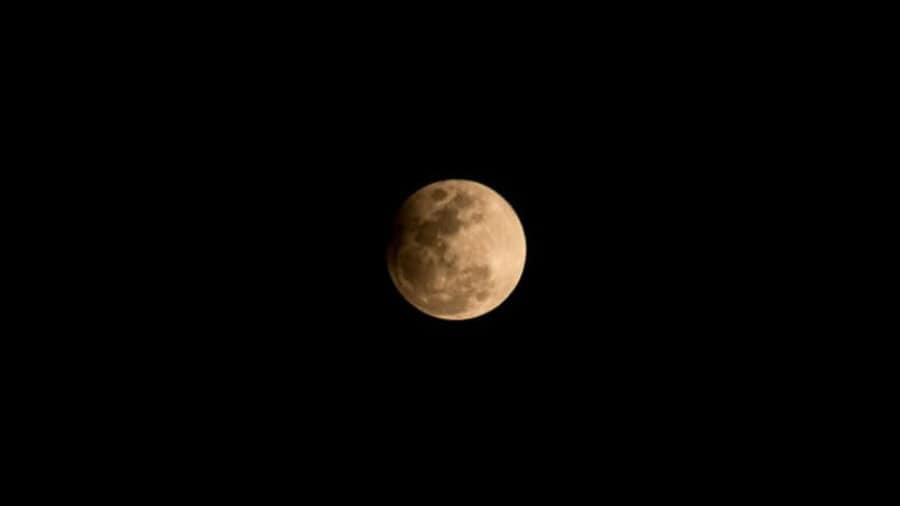The advent of 3D printing technology has revolutionized various industries on Earth, and its potential applications in space construction are equally transformative. As humanity sets its sights on the Moon and beyond, the need for efficient, sustainable, and innovative construction methods becomes paramount. 3D printing, or additive manufacturing, offers a unique solution to the challenges posed by extraterrestrial environments.
By enabling the creation of structures using local materials, this technology not only reduces the need for transporting building materials from Earth but also paves the way for self-sustaining habitats on celestial bodies. In the context of lunar exploration, 3D printing can facilitate the rapid construction of essential infrastructure, such as habitats, research facilities, and landing pads. The Moon’s harsh environment, characterized by extreme temperatures, radiation, and micrometeorite impacts, necessitates robust and adaptable construction methods.
3D printing allows for the design of structures that can withstand these conditions while also being tailored to meet the specific needs of astronauts and researchers. As space agencies and private companies invest in lunar missions, the integration of 3D printing into their plans is becoming increasingly vital.
Key Takeaways
- 3D printing technology has the potential to revolutionize space construction by enabling the on-site production of infrastructure and tools.
- Building infrastructure on the moon presents unique challenges such as limited resources, extreme temperatures, and lack of atmosphere.
- 3D printing technology can overcome these challenges by using local materials, minimizing the need for transporting resources from Earth, and creating structures that can withstand lunar conditions.
- The potential benefits of using 3D printing for lunar construction include cost savings, faster construction times, and the ability to adapt to unforeseen circumstances.
- Case studies of successful 3D printing projects in space, such as the construction of habitats and tools on the International Space Station, demonstrate the feasibility and potential of this technology for lunar development.
The challenges of building infrastructure on the moon
Extreme Temperature Fluctuations
The Moon’s lack of a breathable atmosphere exposes construction efforts to harsh solar radiation and extreme temperature fluctuations. Daytime temperatures can reach as high as 127 degrees Celsius (260 degrees Fahrenheit), while nighttime temperatures can drop to -173 degrees Celsius (-280 degrees Fahrenheit). These conditions require materials and designs that can withstand such extremes without compromising structural integrity.
The Challenges of Lunar Regolith
The Moon’s surface is covered with a layer of loose, fragmented material known as regolith. This regolith is not only abrasive but also poses difficulties in terms of stability and compaction. Traditional construction methods may need to be adapted to accommodate the unique properties of lunar regolith.
Logistical Challenges of Building on the Moon
The Moon’s lower gravity affects how materials behave, making traditional construction methods that rely on heavy machinery impractical. Furthermore, transporting construction materials from Earth is prohibitively expensive and logistically complex. Each kilogram sent to the Moon can cost thousands of dollars, making it essential to utilize local resources effectively.
How 3D printing technology can overcome these challenges
3D printing technology offers innovative solutions to the unique challenges of lunar construction by enabling the use of in-situ resources. One promising approach is utilizing lunar regolith as a primary building material. Researchers have developed techniques to process regolith into printable materials that can be used to create structures directly on the Moon’s surface.
Moreover, 3D printing allows for rapid prototyping and construction, which is crucial in a setting where time is of the essence. The ability to design and print structures on-demand means that habitats can be constructed quickly in response to changing needs or unforeseen challenges.
For instance, if a lunar mission encounters unexpected environmental conditions or requires additional living space, 3D printing can provide a flexible solution that traditional construction methods cannot match. This adaptability is essential for ensuring the safety and comfort of astronauts during extended missions.
The potential benefits of using 3D printing for lunar construction
The benefits of employing 3D printing technology in lunar construction extend beyond mere efficiency; they encompass sustainability, cost-effectiveness, and enhanced design capabilities. By utilizing local materials like lunar regolith, missions can significantly reduce their reliance on Earth-sourced materials, leading to lower transportation costs and a smaller carbon footprint associated with space travel. This aligns with broader goals of sustainability in space exploration, where minimizing environmental impact is becoming increasingly important.
Additionally, 3D printing enables architects and engineers to design complex structures that would be difficult or impossible to create using traditional methods. The technology allows for intricate geometries and customized designs tailored to specific mission requirements. For example, habitats can be designed with integrated shielding against radiation or optimized for thermal insulation based on lunar day-night cycles.
This level of customization enhances not only the functionality of lunar structures but also the overall quality of life for astronauts living and working on the Moon.
Case studies of successful 3D printing projects in space
Several notable projects have demonstrated the feasibility and effectiveness of 3D printing in space environments.
In this project, researchers used a laser to fuse particles of regolith simulant into solid forms, showcasing how lunar materials could be transformed into usable building blocks for future missions.
Another significant case study is ICON’s collaboration with NASA’s 3D-Printed Habitat Challenge. ICON developed a prototype habitat called “Vulcan,” which was designed to be printed using materials that could be sourced from the Moon. The project aimed to explore how 3D printing could facilitate the construction of habitats that are not only functional but also capable of supporting human life in extreme environments.
The success of these projects has provided valuable insights into the practical applications of 3D printing technology in space construction.
The future of 3D printing in lunar infrastructure development
Looking ahead, the future of 3D printing in lunar infrastructure development appears promising as advancements in technology continue to evolve. As space agencies like NASA and private companies such as SpaceX ramp up their efforts toward lunar exploration, integrating 3D printing into their plans will likely become standard practice. Future missions may involve not only constructing habitats but also creating entire research facilities or manufacturing plants on the Moon using additive manufacturing techniques.
Moreover, ongoing research into new materials and printing methods will enhance the capabilities of 3D printing in space. Innovations such as bio-based materials or advanced composites could further improve the performance and sustainability of printed structures. As these technologies mature, they will enable more ambitious projects on the Moon and potentially pave the way for human settlements on Mars and beyond.
Ethical and environmental considerations of 3D printing on the moon
While 3D printing presents numerous advantages for lunar construction, it also raises ethical and environmental considerations that must be addressed as humanity ventures further into space. One primary concern is the potential impact on the Moon’s pristine environment. The introduction of human activities, including construction, could disrupt existing geological features or lead to contamination from Earth-based materials.
It is crucial to establish guidelines that prioritize environmental stewardship and minimize human footprints on celestial bodies. Additionally, ethical considerations surrounding resource utilization must be taken into account. As we explore the Moon’s resources for construction purposes, questions arise about ownership and rights over extraterrestrial materials.
The Outer Space Treaty of 1967 establishes that celestial bodies are not subject to national appropriation; however, as commercial interests in space grow, defining ethical frameworks for resource extraction becomes increasingly complex. Ensuring equitable access to resources while respecting international agreements will be vital as we advance our presence on the Moon.
the role of 3D printing in shaping the future of lunar exploration and habitation
As humanity embarks on an era of renewed lunar exploration, 3D printing stands out as a pivotal technology that will shape our approach to building infrastructure beyond Earth. Its ability to utilize local materials efficiently while providing flexibility in design positions it as an essential tool for constructing habitats and facilities on the Moon. The successful case studies already undertaken demonstrate that this technology is not merely theoretical; it has practical applications that can support future missions.
The integration of 3D printing into lunar construction efforts will not only enhance our capabilities but also contribute to sustainable practices in space exploration. As we navigate ethical considerations and environmental impacts associated with our activities on celestial bodies, it is imperative that we approach these challenges thoughtfully. Ultimately, 3D printing has the potential to redefine how we build and inhabit other worlds, laying the groundwork for a future where humans can thrive beyond our home planet.
A related article to The Role of 3D Printing in Building Infrastructure on the Moon can be found in the link The Ultimate Guide to the Best Lighting Design Software of 2023. This article explores the latest trends and advancements in lighting design software, which could be crucial for creating sustainable and efficient lighting systems for lunar infrastructure built using 3D printing technology.
FAQs
What is 3D printing?
3D printing, also known as additive manufacturing, is a process of creating three-dimensional objects by layering materials based on a digital model.
How does 3D printing work in building infrastructure on the Moon?
In the context of building infrastructure on the Moon, 3D printing involves using lunar regolith (moon dust) as the raw material for construction. A 3D printer would deposit layers of regolith to build structures such as habitats, roads, and other necessary infrastructure.
What are the advantages of using 3D printing for building infrastructure on the Moon?
Using 3D printing for building infrastructure on the Moon offers several advantages, including the ability to use local materials (lunar regolith), reduced need for transporting construction materials from Earth, and the potential for rapid and efficient construction.
What are the challenges of using 3D printing for building infrastructure on the Moon?
Challenges of using 3D printing for building infrastructure on the Moon include the development of suitable 3D printing technology for the lunar environment, ensuring the structural integrity and durability of printed structures, and addressing potential issues related to the lunar regolith as a construction material.
What are some potential applications of 3D printing in lunar infrastructure?
Potential applications of 3D printing in lunar infrastructure include building habitats for astronauts, creating protective barriers against radiation and micrometeoroids, constructing landing pads for spacecraft, and developing other essential infrastructure for sustainable lunar exploration and habitation.



